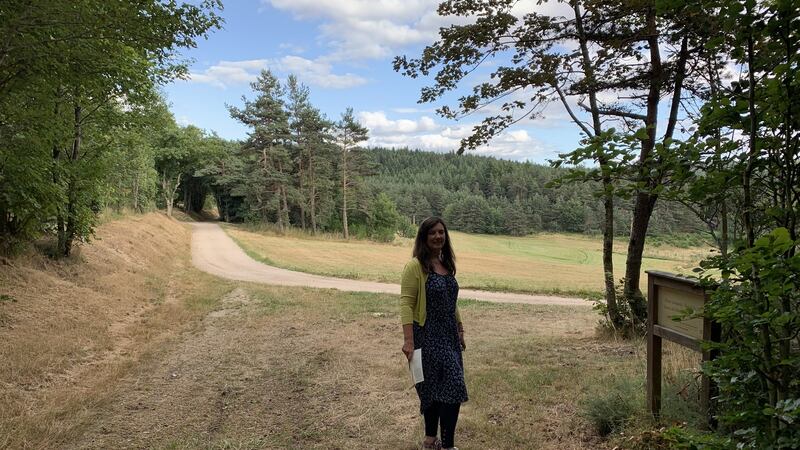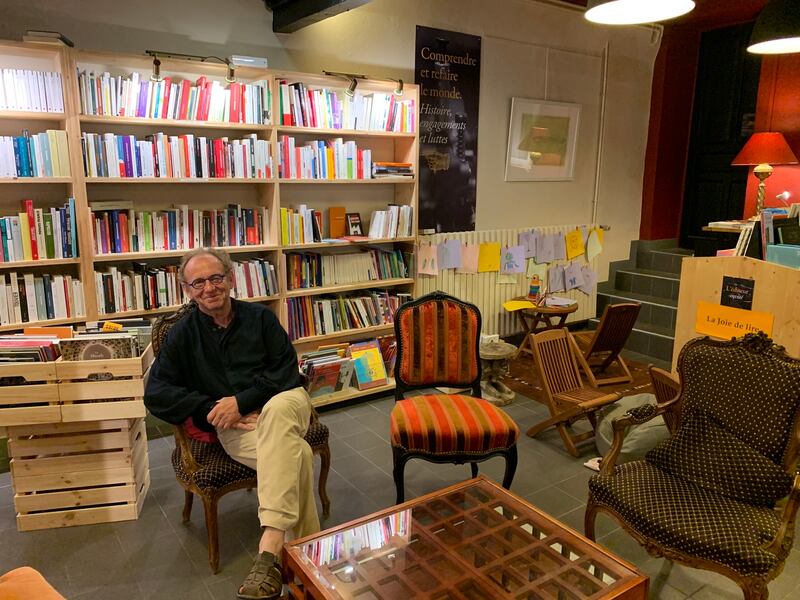If discovering a new region is like reading a book, my first visit to the Plateau Vivarais-Lignon in France’s Auvergne was a bit like opening the cover as if to begin, but then setting the book down again. The discovery of its remarkable story came some decades later.
I arrived as a student in the summer of 1990, thanks to a generous university travel grant. Keen to improve my French, I’d responded to an advert in a church magazine in Northern Ireland seeking volunteers to help in the Equipe de Service at Camp L’Hermon, a rustic holiday centre, not much more than a field really, in this quiet corner of rural France. Children from disadvantaged urban areas spent time there during the summer at the invitation of small local congregations. I knew little else about it.

As it happens, the links between those French congregations and Ireland were strong, owing to the influence of John Nelson Darby. Named after Lord Nelson, a sponsor at his baptism, John Nelson Darby was a graduate of Trinity College Dublin (and Classical Gold Medallist) who became an Anglican curate in Co Wicklow in the early 1820s. Disillusioned with the established church, Darby and his associates (including Lady Powerscourt and John Synge of Glanmore, father of the playwright, J M Synge) sought reform through close engagement with scripture. Darby was a talented, scholarly linguist. He wrote prolifically and travelled widely, preaching, and winning hearts and minds. He spent time in Pau in the Pyrenees translating the Bible from Hebrew and Greek into French. He also visited the Ardèche, establishing congregations espousing his teachings among the Huguenot population in the hills, as far north as the Plateau Vivarais-Lignon itself; one of his mountain converts made an appearance in Robert Louis Stevenson’s Travels with a Donkey in the Cévennes. Thus, the small non-conformist Ulster congregations in which I grew up shared their theological and ecclesiastical heritage with the French Darbystes.
There wasn’t much evidence of John Nelson Darby at Camp L’Hermon during my stay. Mostly it was a matter of doing la vaisselle, preparing le goûter for lots of hungry French children (generous chunks of baguette filled with slabs of chocolate washed down with gallons of diluted sirop à la menthe et aux fraises) and les repas (avec soin) dans la cuisine. This, after all, was France.

What I do remember was the journey to get there, for it felt as if we were voyaging to the end of the earth. The little bus from St Étienne clung valiantly to the narrow mountain roads that wound their way along the hillsides, making the steep ascent to the Plateau. Our destination was a patchwork of otherworldly green – oceans of hillside carpeted in chestnut trees and coniferous woodland that stretched as far as the eye could see. The expansive vistas were relieved from time to time by rectangles of meadow, modest fields of barley, sometimes dotted with horses or cattle, and textured by a dense network of chemins. These paths and lanes and narrow country roads are the arteries of the place, connecting the close communities of hamlets and farmsteads and occasional sleepy villages. It is a land watered by the Lignon, overlooked by the constant presence of volcanic peaks and the lofty source of the Loire.
Cultural influence
To continue the story, we fast-forward to the 21st century. Three happy years spent in doctoral study on the Spanish writer Miguel de Unamuno had yielded an intriguing discovery: the presence of six pieces relating to John Nelson Darby in Unamuno’s personal library. Darby’s cultural influence in Europe became, from then, a question of personal interest. When asked to review Caroline Moorehead’s Village of Secrets, a book that included a whole chapter on Darby’s followers on the Plateau Vivarais-Lignon, I didn’t hesitate. There have been differences of opinion about this book, but it opened up a fascinating history: the Plateau’s Huguenot heritage; the sympathy for persecuted minorities; the remarkable humanitarian practice of welcoming refugees that persists today. Protestant social reformers, including Charles Gide, uncle of novelist André, had established children’s homes in the area in the 19th century. This infrastructure proved invaluable in subsequent sheltering of refugees from the Spanish Civil War, evacuees, and eventually Jews who were given shelter there during the second World War. People of faith on the Plateau took the words of Christ in scripture at face value. “Aimez-vous les uns les autres” reads the inscription at the entrance to the Temple in Le Chambon village.

What is perhaps less well known is the Plateau’s literary heritage. This tiny patch of earth became home, for a time, for a distinguished group of 20th Century French intellectuals and writers, including Albert Camus, Francis Ponge and Paul Ricoeur. The family of Camus’s wife Francine owned a house deep in the Plateau countryside, and Camus spent time there between 1942 and 1943, seeking recovery from tuberculosis, and writing La Peste. Poet Francis Ponge and philosopher Paul Ricoeur also lived and wrote there. After the war, Ricoeur came to the area with his young family, to take up a teaching post – a kind of rehabilitation after his experience as prisoner of war – at the Collège Cévenol.
This moment in cultural history that saw a surprising community of major French writers and intellectuals coexist in a remote, improbable place, is the focus of a carefully researched exhibition curated by Nathalie Heinich, writer and sociologist of art. Recently shown in Paris, it is currently back home in Le Chambon’s Lieu de Mémoire. Heinich’s father was a refugee on the Plateau, and later brought his family to holiday there. Her ties to the Plateau run deep. Of Jewish and Protestant parentage, she has found it to be a place of personal refuge, offering a much slower pace of life than Paris, and the time and space needed to write, reflect and rest. Her 2018 book, Une Histoire de France, traces the cultural and historical currents affecting the two minority groups that shaped her family’s story. Each protagonist is given his or her own chapter. It is a moving book that traces stories of personal and family success, but also of pain and loss and sadness, against the tempestuous political backdrop of early 20th Century Europe. Her earlier book Maisons Perdues (published in 2013) reflects Heinich’s fascination with houses, and is similarly personal (there is an evocative photograph on the cover of the writer as a toddler, the camera following her as she makes her way along a garden path). Each house that has featured in her life is given a chapter. It is tinged with nostalgia, and coloured by her strong, observant eye. The result is poignant, capturing the moods of memory. Heinich has now found a house of her own in Le Chambon, filled with art and books, with a wonderful, spacious garden; she takes joy in practising hospitality on the Plateau that embraced her.

Rugged beauty
This summer it was my daughters’ turn to help at Camp L’Hermon. They too did la vaisselle and le ménage, and learned to serve others. They too drank in the stark, rugged beauty of the mountains. But I’m pleased that they have also learned something of the heritage of the place. It was my delight to return to the Plateau with them. The Darbystes are still there. Refugees are welcomed, as they were by previous generations. These days, the Plateau’s story of salvation and refuge is honoured in the Lieu de Mémoire. We spent a morning there in the company of cultural guide, Floriane Barbier, and Maxime Friedenberg, a sculptor from Rouen in his eighties, with a warm and mischievous smile. Maxime was an enfant caché on the Plateau during the war, and his father a member of the resistance. He shared his childhood memories. While Maxime’s own life was saved, for which he expressed great gratitude, his eyes brimmed with tears for his friends, lost to death camps. Life, we remembered, is precious.
Literary life on the Plateau flourishes. We browsed several bookshops in Le Chambon. We spent a delectable evening at L’Arbre vagabond, a bar à vins-librairie. This treasure trove for bibliophiles, slow-foodies and lovers of wine sits in a former school surrounded by farmland: a quilt of barley meadows wrapped around quiet yards and homesteads. L’Arbre vagabond is the dream-come-true of publisher and poet Jean-François Manier, and his son and chef, Simon. Each year in August it hosts the Lectures sous l’arbre festival, with poetry readings under the chestnut trees. We reached the restaurant via a sun-dappled path through woodland, pitting our linguistic wits to solve the riddle posed by twelve proverbs in patois nord-occitan as we went: Le Chemin des Proverbes is a fine example of literary tourism in collaboration with the Moulin de Montabonnel, a delightful Chambre d’hôtes in a nearby renovated mill.

I write these lines as we make our journey home to Ireland. Stepping into the story of the Plateau Vivarais-Lignon we saw kindness, and the gift of hospitality. We grasped something of the value of the written word, of history, and remembering. Of scripture. Of the beauty and fragility and worth of every single human life. I’m unsure how future chapters in our stories will unfold. But the lessons learned on the Plateau are surely worth carrying with us.



















